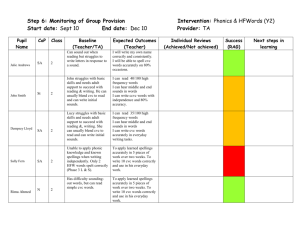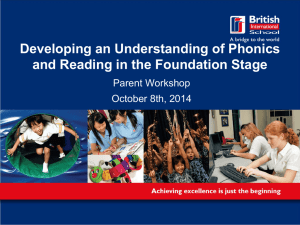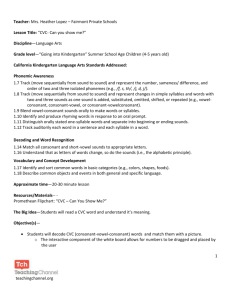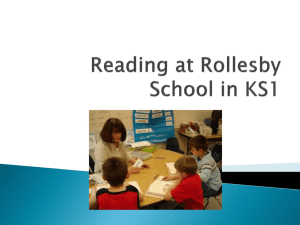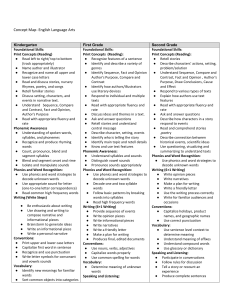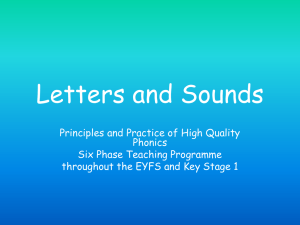5 - Nonsense Word Fluency (WWR)
advertisement
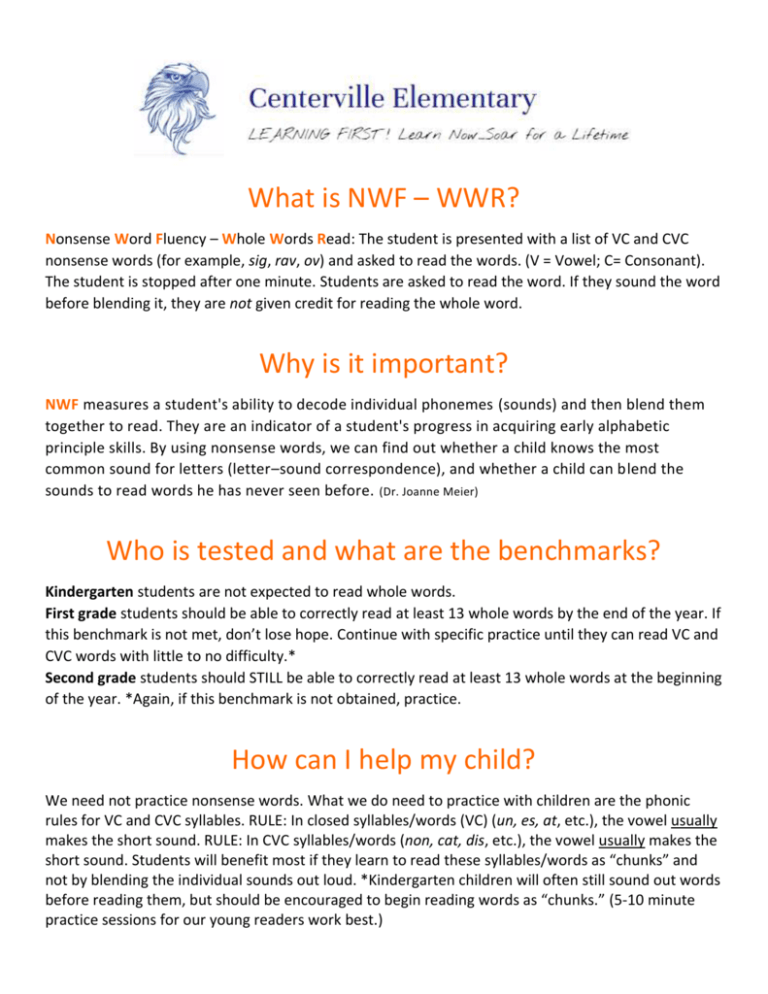
What is NWF – WWR? Nonsense Word Fluency – Whole Words Read: The student is presented with a list of VC and CVC nonsense words (for example, sig, rav, ov) and asked to read the words. (V = Vowel; C= Consonant). The student is stopped after one minute. Students are asked to read the word. If they sound the word before blending it, they are not given credit for reading the whole word. Why is it important? NWF measures a student's ability to decode individual phonemes (sounds) and then blend them together to read. They are an indicator of a student's progress in acquiring early alphabetic principle skills. By using nonsense words, we can find out whether a child knows the most common sound for letters (letter–sound correspondence), and whether a child can blend the sounds to read words he has never seen before. (Dr. Joanne Meier) Who is tested and what are the benchmarks? Kindergarten students are not expected to read whole words. First grade students should be able to correctly read at least 13 whole words by the end of the year. If this benchmark is not met, don’t lose hope. Continue with specific practice until they can read VC and CVC words with little to no difficulty.* Second grade students should STILL be able to correctly read at least 13 whole words at the beginning of the year. *Again, if this benchmark is not obtained, practice. How can I help my child? We need not practice nonsense words. What we do need to practice with children are the phonic rules for VC and CVC syllables. RULE: In closed syllables/words (VC) (un, es, at, etc.), the vowel usually makes the short sound. RULE: In CVC syllables/words (non, cat, dis, etc.), the vowel usually makes the short sound. Students will benefit most if they learn to read these syllables/words as “chunks” and not by blending the individual sounds out loud. *Kindergarten children will often still sound out words before reading them, but should be encouraged to begin reading words as “chunks.” (5-10 minute practice sessions for our young readers work best.) Examples: Books, magazines, environmental print: As you read together with your beginning readers, pay attention to VC and CVC words. You may choose to stop every time you see the words “pet,” “dog,” or “cat” in a story about pets and let your beginning reader read those words out loud. (They may sound them out the first time, but encourage them to read the words as a whole word from that point on.) First and second grade children should sound words in chunks (or syllables), not individual phonemes (sounds), when reading words in which they are not familiar. Writing: Writing helps practice with every step of reading acquisition. If your child wants to know how to spell a VC or CVC word, have them practice their phonemic segmentation skills before writing what they hear. When they tell you the word they need help spelling, ask them, “What sounds do you hear? Write the letters for those sounds.” The one doing the work is the one doing the learning. (Jeffrey Wilhelm) Don’t do for your child what they can, and should, do for themselves. Support them when needed, but let them gain independence in their reading and writing skills as much as possible. Electronic devices: www.starfall.com www.softschools.com/language_arts/phonics www.abcfastphonics.com www.readingbear.org Phonics Genius App Phonics Tic-Tac-Toe App Word Wizard App Hideout App These activities are practice. When you listen to your child read, make sure they are transferring their electronic expertise to reading. These forms of practice are planned and deliberate. Below are some high frequency VC and CVC words cards. *Remember – short sessions of practice – 5-10 minutes. in is it for on as his at or had not but an her can up if has him did get back man us men big got set far let sun yet red six rug pad pin sack bag pack dog cat What do you do if your child is struggling with this skill? Practice reading VC and CVC words using this research based routine. (Keep sessions to 5-10 minutes.) Blending Routine sun Say the sound of the first letter in the word. Look at the second letter of the word. sun Say the sound of the second letter in the word. Look at the third letter of the word. sun Say the sound of the third letter of the word. Look at the first letter of the word. sun Say the sound of each letter in the word faster and faster and blend the sounds until you read the word. Dr. Ray Reutzel
